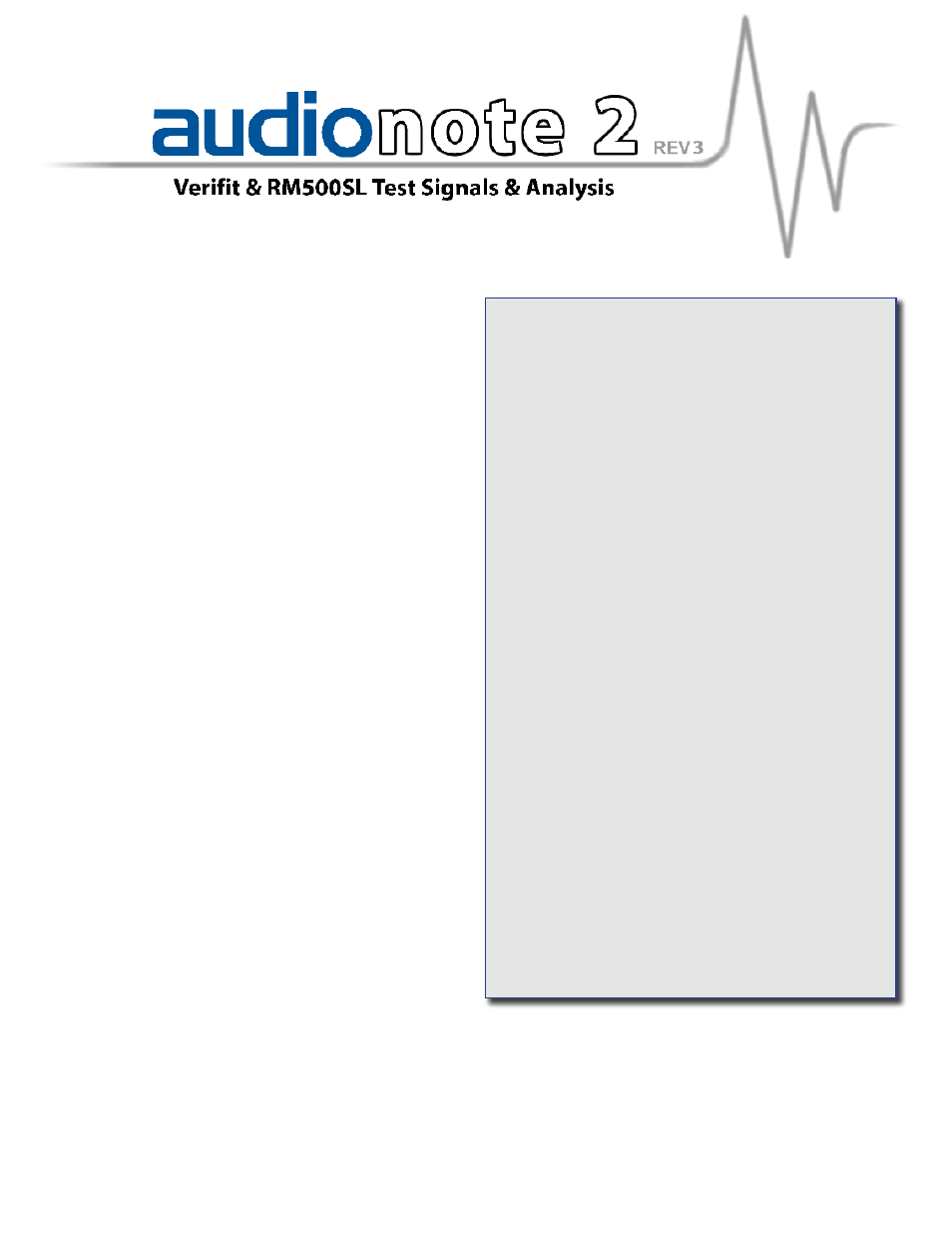Audioscan Axiom User Manual
Page 119

1 Introduction
The Verifit and RM500SL are full-duplex dual-chan-
nel audio measurement systems designed for the
testing and fitting of all types of hearing instruments
and many assistive listening devices. They provide
an acoustic test chamber for the testing of devices
coupled to standard 2 cm
3
couplers as well as sound-
field speaker(s) for on-ear measurement of hearing
aid performance. The Verifit test chamber contains
two loudspeakers for the functional testing of direc-
tional hearing instruments. Test signals are deliv-
ered to the device under test via the test chamber
loudspeaker(s), the test chamber telephone mag-
netic-field simulator (TMFS), the test chamber mag-
netic field test loop (Verifit only) or the sound-field
loudspeaker(s). Device output signals are measured
in the 2 cm
3
coupler via the coupler microphone or in
a real ear via the probe microphone. Data from the 2
cm
3
coupler may be viewed as coupler SPL, coupler
gain or as estimated SPL in the ear canal (simulated
real-ear measurements, S-REM). Data from the probe
microphone may be viewed as ear canal SPL, as ear
canal SPL re normal hearing threshold (i.e. dB HL), as
insertion gain or as ear canal SPL in the context of an
auditory area (Speechmap®).
2 The test signals
Sinusoidal, pseudo-random noise and digitized real
speech signals are provided. Two signals derived
from real speech, the International Speech Test Signal
(ISTS) and the single-talker International Collegium of
Rehabilitative Audiology (ICRA) signal, are also pro-
vided. Test signals are generated in real time by the
digital signal processor (DSP) or played from 16 bit
binary audio files stored in the on-board flash memo-
ry. In the Verifit, these audio files are up-loaded from
the internal compact disc (CD) drive at power up. In
order to provide a repeatable acoustic signal to the
device under test, a reference microphone is used in
conjunction with a digital control loop to maintain
the desired band level at each frequency. Live audio
(speech, music etc.) may also be used as a test signal
but it is not controlled for spectrum or level.
1
Some useful facts about broad-band signals
Overall SPL is the SPL in a band containing all signifi-
cant frequency components of the signal.
Spectrum level is the SPL in a band 1 Hz wide.
Band SPL is the SPL in a restricted frequency range.
If the signal is uniform in the band, band SPL = Spec-
trum level + 10*log(bandwidth).
A spectrum is the band SPL, or spectrum level, in a
series of adjacent bands.
For a broad-band signal, the overall SPL is greater
than the band SPL and the band SPL is greater than
the spectrum level. For a pure tone, the overall SPL,
the band SPL and the spectrum level are the same.
A white noise signal has a spectrum level that is inde-
pendent of frequency (i.e. constant SPL per Hertz).
A pink noise signal has a spectrum level that is in-
versely proportional to frequency (i.e. constant SPL
per octave).
A fractional octave band (e.g. 1/3 octave) has a band-
width that is proportional to frequency.
A pink noise signal has a flat spectrum when ana-
lyzed in fractional-octave bands.
A critical band is a band within which the loudness
of a continuously-distributed signal of constant SPL
is independant of bandwidth.
Bill Cole BASc, PEng
09/01/29 © Etymonic Design Incorporated, 20 Ludwig St., Dorchester, ON, Canada N0L 1G4
USA 800-265-2093 519-268-3313 FAX 519-268-3256 www.audioscan.com